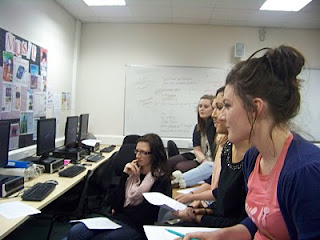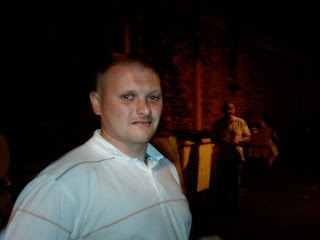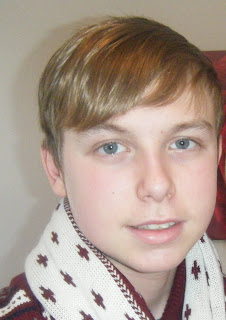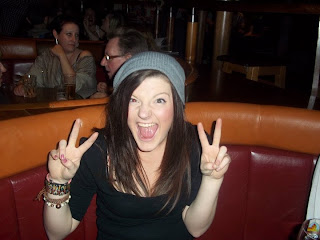What have you learned from you audience feedback? Questionnaire Our results from this questionnaire We asked 8 members of our class to answer our questionnaire and these were the answers we got; 1. On a scale of 1-5 how did you find each of the following? (1 being not very 5 being very)
Informative- From our classroom feedback we had 4 people that answered with 4 and the other 4 people answered with 5, this allowed our group to know that our production is informative as No one rated our production lower than a four and we got good ratings for the information that is given out in the production.
Engaging- Our classroom feedback showed us that our production was engaging to most of our audience as four people rated our production with a 4 and three people rated it with a 5 and there was only one person who rated us with a 3.
Relevant- The results from the questionnaire feedback show us that the content of our production is relevant to our Title. Four people from the feedback gave us a 4 and the other four gave us a 5. 2. Does the title relate to the content of the documentary? Yes No
For this answers all the feedback from our audience shows us that our title does relate to the content within the documentary. All 8 of the Audience chose to give us a yes for this answer. 3. How did you find the technical quality?
We asked our audience about how they thought the technical quality of our production was and here are the answers:Sound- Five members of the audience rated our sound quality as a 4 and the other three answered with a 5, this shows that are sound quality isn’t bad as we scored over half marks from the audience.
Editing- Four members of the audience decided to give us a 4 on the editing of the documentary and the other 4 chose to rate us with a 5.
Music- The music within the documentary was used to relate the emotion with the audience, therefore the results show that two people from the audience rated us with a 4 and the other six gave us a 5.
Camera Work- The camera work in our production didn’t get rated high with the audience as one person rated us with a 3, four gave us 4 and three gave us a 5.
Framing- With the framing of interviews in our production we got rated with six people scoring us with a 4 and two people with a 5.
4. Does the music relate to the documentary content? Yes No
All the audience answered yes for this question, this let us as a group know that we have chosen the correct music for our documentary. 5. Would it be appropriate to schedule this documentary on Channel 4? Yes No
With this question all members from the audience rated us with a yes; this showed us that our documentary would be suitable to be shown on channel 4. Print advert 1. Does the print advert look like a real print advert? Yes No
2. Is it eye catching? Yes No
3. Is the image chosen relevant to the content of the documentary? Yes No 4. Does it follow the codes and convections of a real print advert? Yes No
5. Does the print advert make you want to watch the documentary? Yes No
With all of these answers all the members of the audience gave us a yes for each question. Our print advert tries to make people want to watch the programme just from seeing it and we believe that that is what it does. The print advert is very bright but also conveys the meaning and emotion that we want it to. We believe that people will understand the picture as it relates to the name of the programme and the slogan brings people in and will make them want to watch the documentary. Radio advert 1. Does the radio advert sound like a real radio advert? Yes No
2. Does the radio advert relate to the documentary? Yes No
3. Does the radio advert make you want to watch the documentary? Yes No
All three of these questions were answered by the audience and they all answered with a yes. Our radio advert has the most interesting bits of the documentary in them, we believe that this will engage the audience and make them feel like they want to find out what the documentary is about. We have many different parts of the interviews in the radio advert therefore we have many different emotions being brought into the advert. 4. On a scale of 1 to 5 how did you find the following?
Engaging- One person from our audience rated us with a 3, Five people gave us a 4 and the other two rated us with a 5.
Sound Quality- One person answered as a 3, four people gave us a 4 and the other three people answered with a 5.
Music- One person gave us a 3, two people gave us a 4 and the other five rated us with a 5.



More audience research: We had produced an audience research from our Class, so We then decided to ask more people from within our target range about how they liked and what they thought of all of our prducts. Documentary 1. On a scale of 1-5 how did you find each of the following? (1 being not very 5 being very).

Gareth, Aged 27 answered....
Informative- 5, it talks about all different things to do with hair.
Engaging- 5, Enjoed watching it and thought each interview was interesting
Relevent- 5, Talk about different aspects to do with hair.
Niall, aged 14 answered...
Informative- 4, liked the bit about the hairloss sufferer
Enaging- 5, liked the different interviews and were they were set
relevent- 5, talks about hair all the way through
Jacqui, aged 42 answered...
Informative- 5, Like how serious the first part was and then how it linked in with the hair loss sufferer.
Engaging- 5, different emotions were brought to me
Relevent- 5, It talks about a different range of things to do with hair

Georgia, aged 19 answered...
Informative- 5,Liked how they had hairdressers at the end
Engaging- 5, Enjoyed the vox pops and how they used people with different hair types Relevent- 5, Talk about hair throughout it all.
Robynn, aged 16 answered...
Informative- 5, Liked how they had a hair loss sufferer on it and a doctor
Engaging- 5, The cutaways kept me interested and stopped me getting bored watching it Relevent- 5, They have added various things to do with hair. Down to peoples problems and why people love doing it.
2. Does the title relate to the content of the documentary?
Gareth- Yes The whole documentary talks about hair.
Niall-
Jacqui- Yes, enjoyed how everything was linked togeth through hair. It went from the doctor to the hair loss sufferer/ hairdresser and then to the barber and hairdresser.
Georgia- Yes enjoyed how they talked about various things to do with hair
Robynn- Yes they shown and gave alot of information about hair.
The Print advert
1. Does the print advert look like a real print advert?
Gareth answered- Yes I think it looks like something that you would see in a newspaper or a magazine

. 2. Is it eye catching?
Niall answered- Yes I think it would make people look at it and be interested in it if they seen it.
3.Is the Image chosen relevent to the content of the magazine? Jacqui answered-
4. Does it follow the codes and conventions of a real print advert?
Georgia answered- Yes, It looks like all the other ones you see in magazines.
5. Does the print advert make you want to watch the documentary?
Robynn answered- Yes, it dragged me in straight away when I seen the advert.
The radio Advert
1. Does the radio advert sound like a real radio advert?
Gareth answered- Yes, it sounds like something that you would hear on a radio show
2.Does the radio advert relate to the documentary?
Jacqui answered- Yes it sounded good and metioned stuff that appears on the documentary.
3. Does the radio advert make you want to watch the documentary?
Robynn answered -
4. On a scale of 1 to 5 how did you find the following?
Geogrgia answered...
Music- 5, I liked how the music tempo changed for the different emotions
Sound Quality- 5, Liked how they all linked together
Engaging- 5, enjoyed listenign to it.
We also put our Documentary on facebook and this is the feedback we got back.
Amanda Hillis Music relates well to the topic of documentary. Photos used well with voiceover. Good use of cutaways and interviews. The sped up section worked well and effective.

Sophie Griffiths I like the way you dont know what it is about at first because of the voxpops, the interviews are good because its interesting to hear from a specialist and someone who suffers from hair loss. all the cutaways suited the documentary and where used appropriately and the voiceover suited the topic, as did the music.

Cathryn Appleton really like the vox pops and the title sequence the graphics for each interviewee is really good with the picture next to it. like the way the pictures that appear, appear when the interviewee starts talking about it. the music doesnt draw y...our attention away from the interview either. really good :-)

Robynn Middlemiss that looks professional sian Coral Evans the interviews are great they dont drag on and the voxpops are reallly goood , music fits in well tooo well in.
Sean Mcminn-Davies Its great Sian, very professional!! The music works well throughout, as does the bit when the video changes tempo (theres probably a name for that, but ive not a clue :P ). Maybe makes the voices on the two guys being interviewed a little louder, but other than that, its crackin', would defo not seem out of place on the tele!!





























